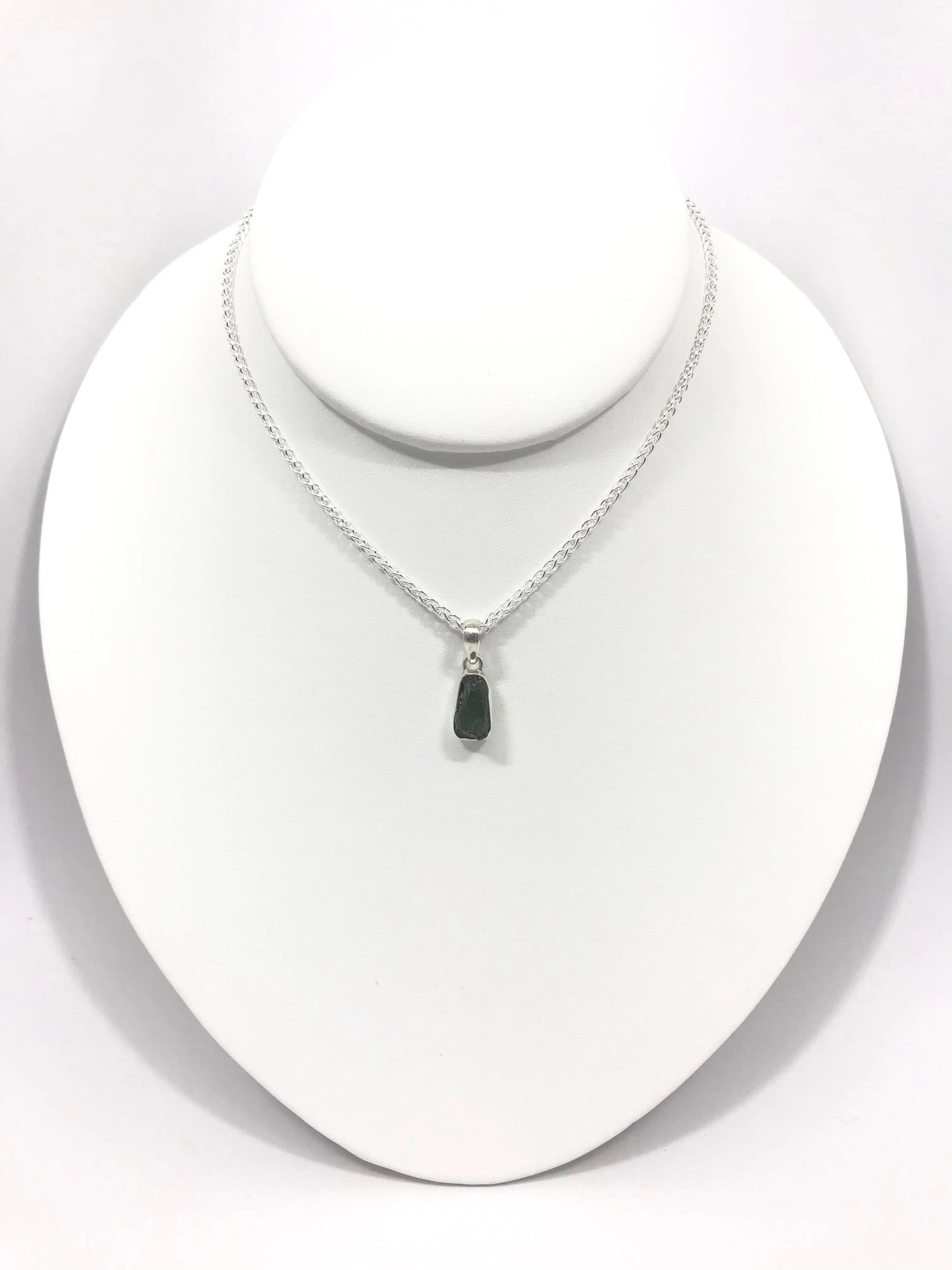Tarazed Gems & Jewellery
Moldavite Pendant
Moldavite Pendant
Couldn't load pickup availability
Moldavite Pendant
Mineral: Tektite var. Moldavite
Origin: South Bohemia, Czech Republic
Color: Dark Green
Treatment: None
Material: Sterling Silver (925)
Approximate Dimensions: 1.5cm x 0.7cm x 0.5cm
Weight: 2g
Note: Chain NOT Included
10% of this purchase will be donated to The World Wide Fund for Nature (WWF) [EU]
In 1900, Franz Eduard Suess pointed out that the gravel-size moldavites exhibited curious pittings and wrinkles on the surface, which could not be due to the action of water, but resembled the characteristic markings on many meteorites. He attributed the material to a cosmic origin and regarded moldavites as a special type of meteorite for which he proposed the name of tektite.
Moldavites' highly textured surfaces are now known to be the result of pervasive etching by naturally occurring CO2 and humic acids present in groundwater. Because of their extremely low water content and chemical composition, the current consensus among earth scientists is that moldavites were formed about 14.7 million years ago during the impact of a giant meteorite in the present-day Nördlinger Ries crater.
Splatters of material that was melted by the impact cooled while they were actually airborne and most fell in Bohemia. Currently, moldavites have been found in an area that includes southern Bohemia, western Moravia, the Cheb Basin (northwest Bohemia), Lusatia (Germany), and Waldviertel (Austria).
Ninety-nine per cent of all moldavite finds have come from the South Bohemian localities, one percent were found in South Moravian localities. Only tens of pieces were found in the Lusatian area (near Dresden), Cheb basin area (West Bohemia) and Northern Austria (near Radessen). Principal occurrences of moldavites in Bohemia are associated with Tertiary sediments of the České Budějovice and Třeboň basins.
The most prominent localities are concentrated in a NW-SE strip along the western margin of the České Budějovice Basin. The majority of these occurrences are bound to the Vrábče Member and Koroseky Sandy Gravel. Prominent localities in the Třeboň Basin are bound to gravels and sands of the Domanín Formation.
In Moravia, moldavite occurrences are restricted to an area roughly bounded by the towns of Třebíč, Znojmo and Brno. The colour of Moravian moldavites usually differs from their Bohemian counterparts, as it tends to be brownish.
Taking into account the number of pieces found, Moravian localities are considerably less productive than the Bohemian ones; however, the average weight of the moldavites found is much higher. The oldest (primary) moldavite-bearing sediments lie between Slavice and Třebíč.
The majority of other localities in southern Moravia are associated with sediments of Miocene as well as Pleistocene rivers that flowed across this area more or less to the southeast, similar to the present streams of Jihlava, Oslava and Jevišovka.
Color may vary in images and videos due to different lightings and angles
Share




